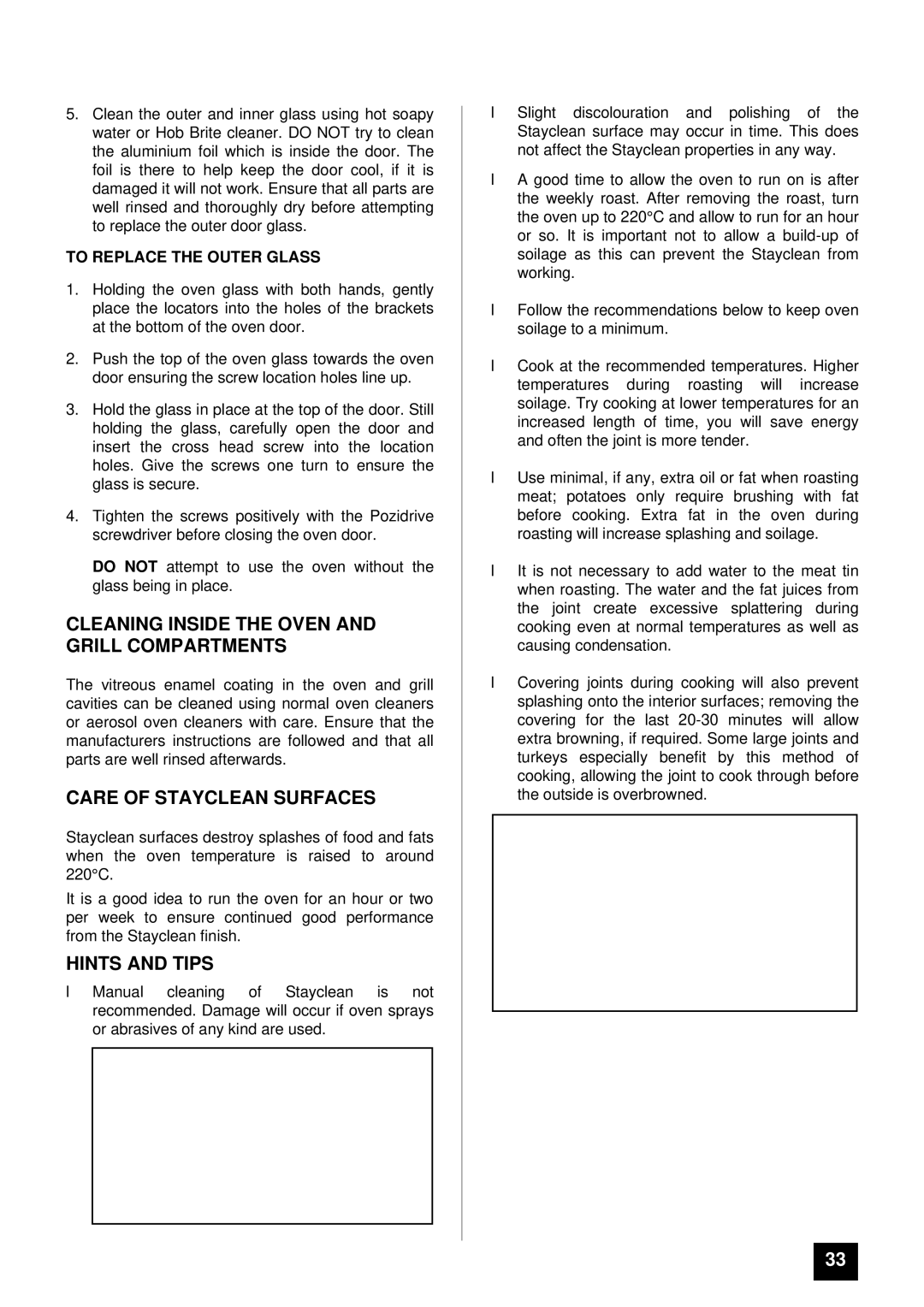
5.Clean the outer and inner glass using hot soapy water or Hob Brite cleaner. DO NOT try to clean the aluminium foil which is inside the door. The foil is there to help keep the door cool, if it is damaged it will not work. Ensure that all parts are well rinsed and thoroughly dry before attempting to replace the outer door glass.
TO REPLACE THE OUTER GLASS
1.Holding the oven glass with both hands, gently place the locators into the holes of the brackets at the bottom of the oven door.
2.Push the top of the oven glass towards the oven door ensuring the screw location holes line up.
3.Hold the glass in place at the top of the door. Still holding the glass, carefully open the door and insert the cross head screw into the location holes. Give the screws one turn to ensure the glass is secure.
4.Tighten the screws positively with the Pozidrive screwdriver before closing the oven door.
DO NOT attempt to use the oven without the glass being in place.
CLEANING INSIDE THE OVEN AND GRILL COMPARTMENTS
The vitreous enamel coating in the oven and grill cavities can be cleaned using normal oven cleaners or aerosol oven cleaners with care. Ensure that the manufacturers instructions are followed and that all parts are well rinsed afterwards.
CARE OF STAYCLEAN SURFACES
Stayclean surfaces destroy splashes of food and fats when the oven temperature is raised to around 220°C.
It is a good idea to run the oven for an hour or two per week to ensure continued good performance from the Stayclean finish.
lHINTS AND TIPS
Manual cleaning of Stayclean is not recommended. Damage will occur if oven sprays or abrasives of any kind are used.
Slight discolouration and polishing of the Stayclean surface may occur in time. This does
lnot affect the Stayclean properties in any way.
A good time to allow the oven to run on is after the weekly roast. After removing the roast, turn the oven up to 220°C and allow to run for an hour or so. It is important not to allow a
Follow the recommendations below to keep oven soilage to a minimum.
Cook at the recommended temperatures. Higher temperatures during roasting will increase soilage. Try cooking at lower temperatures for an increased length of time, you will save energy and often the joint is more tender.
Use minimal, if any, extra oil or fat when roasting meat; potatoes only require brushing with fat before cooking. Extra fat in the oven during roasting will increase splashing and soilage.
It is not necessary to add water to the meat tin when roasting. The water and the fat juices from the joint create excessive splattering during cooking even at normal temperatures as well as
lcausing condensation.
Covering joints during cooking will also prevent splashing onto the interior surfaces; removing the covering for the last
33
